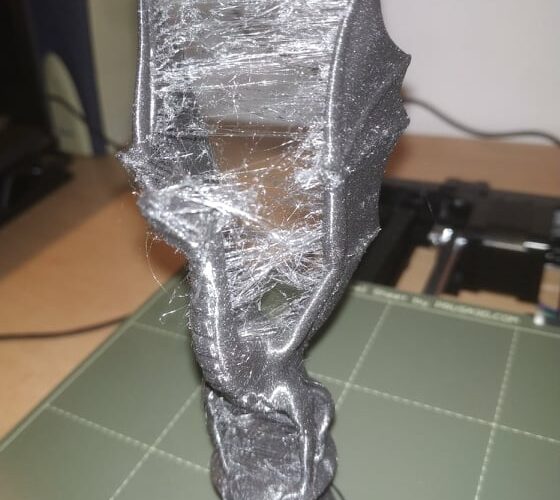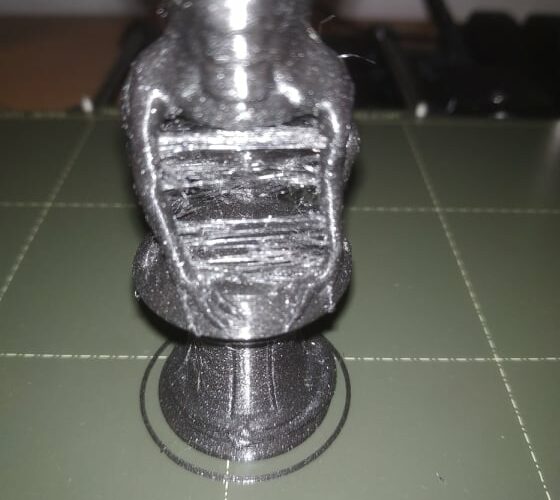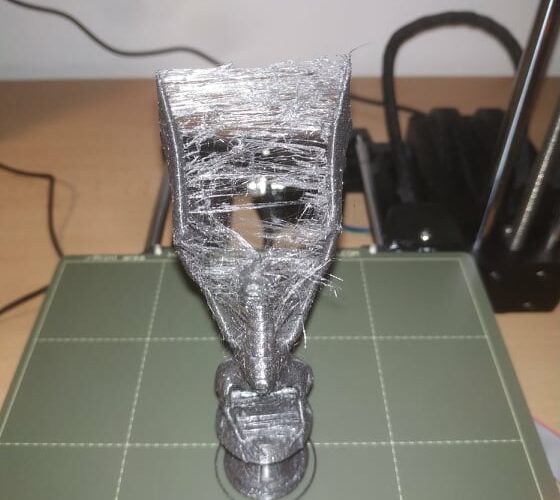Prusa mini+ has a stringing problem
I had some troubles with stringing since my first print (Benchy), it was quite stringy under the roof and between the arches and at that time it didn´t seem like somthing serious/big issue.
And today I dived into my real print, Aria the Dragon, (source: https://www.thingiverse.com/thing:600550 ) and I included photos so you can see how STRINGY it got. The print turned out really nicely, but it was really stringy.
Could anybody help me to reduce stringing, please?
Btw, I tried to set retraction to 4 and lowered the temperature from 215 to 210 or 205 Celsius, so I thought I had it covered (after reading few articles)
suggestions.
Check the file to ensure the right filament is chosen for the gcode. Have you printed a temp tower for that filament?
--------------------
Chuck H
3D Printer Review Blog
RE: Spiderweb
Wow, haven't seen such spiderweb even with slightly moist PETG. So as @cwbullet suggested check that
- Your filament profile matches your filament (i.e. you use PLA for PLA and PETG for PETG and so on). It is easy to make that mistake, you would not be the first one.
- Give us a clue what material are you using for printing, then we can better guessimate the reason for such a web forming.
- Some filaments suck moisture out of thin air and when they get moist, you get all kinds of printing problems, e.g. PETG will become real stringy first, then there can be other problems as well. To remedy this, use a drier, some cheap food driers are like made for drying out filament spools.
Flament
Some filaments suck moisture out of thin air and when they get moist, you get all kinds of printing problems, e.g. PETG will become real stringy first, then there can be other problems as well. To remedy this, use a drier, some cheap food driers are like made for drying out filament spools.
Isn’t that the truth. I dry all filaments that sit for more than 4 days.
--------------------
Chuck H
3D Printer Review Blog
Pla
Thank you for your reply, I used prusament pla (the test sample), it's possible it got some moisture from air, because I let it open (but folded in my drawer).
Material check
Thank you for your reply! I will check it, but I am under the impression that I chose PLA as the material to print with, but I will definitely check it.
Let us know
Please let us know so we can help. Stinginess is tough to beat.
--------------------
Chuck H
3D Printer Review Blog
RE: Example of difference of moist and dry filament
I don't have PLA, so this was done on PETG. I had Prusament PETG Carmine Red which had been on the table for few months. Printed this Dragon with it using default Draft-quality, dried the roll in cheap (sub 40€) food dehydrator for six hours and reprinted the very same gcode. If you are not able to tell which is which, the dragon on the left is printed with moist filament, right one after drying it.
PETG is a bit stringy itself, but normally you get slight hair here and there. Spriderweb is an indicator of moist filament.


